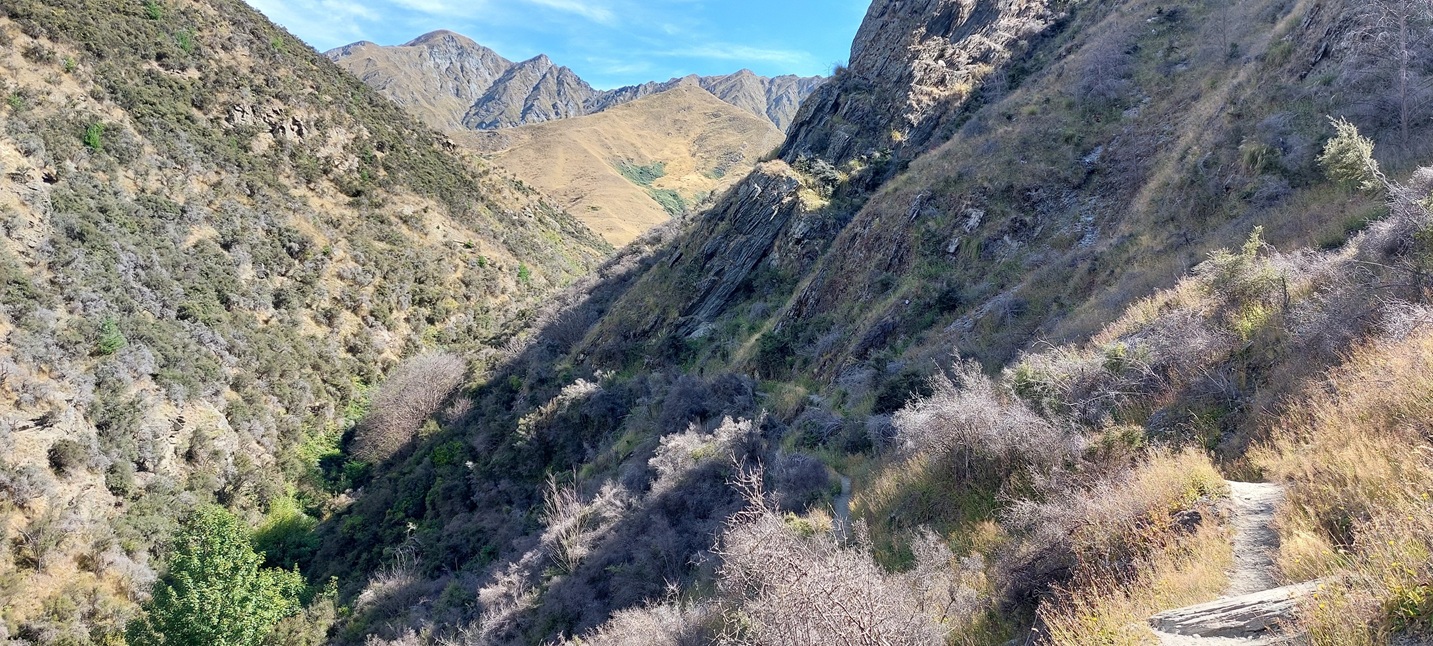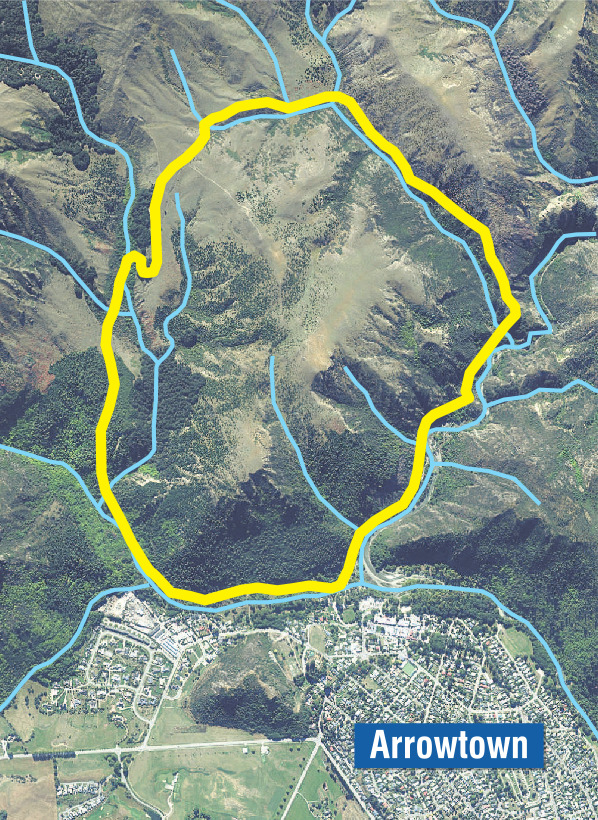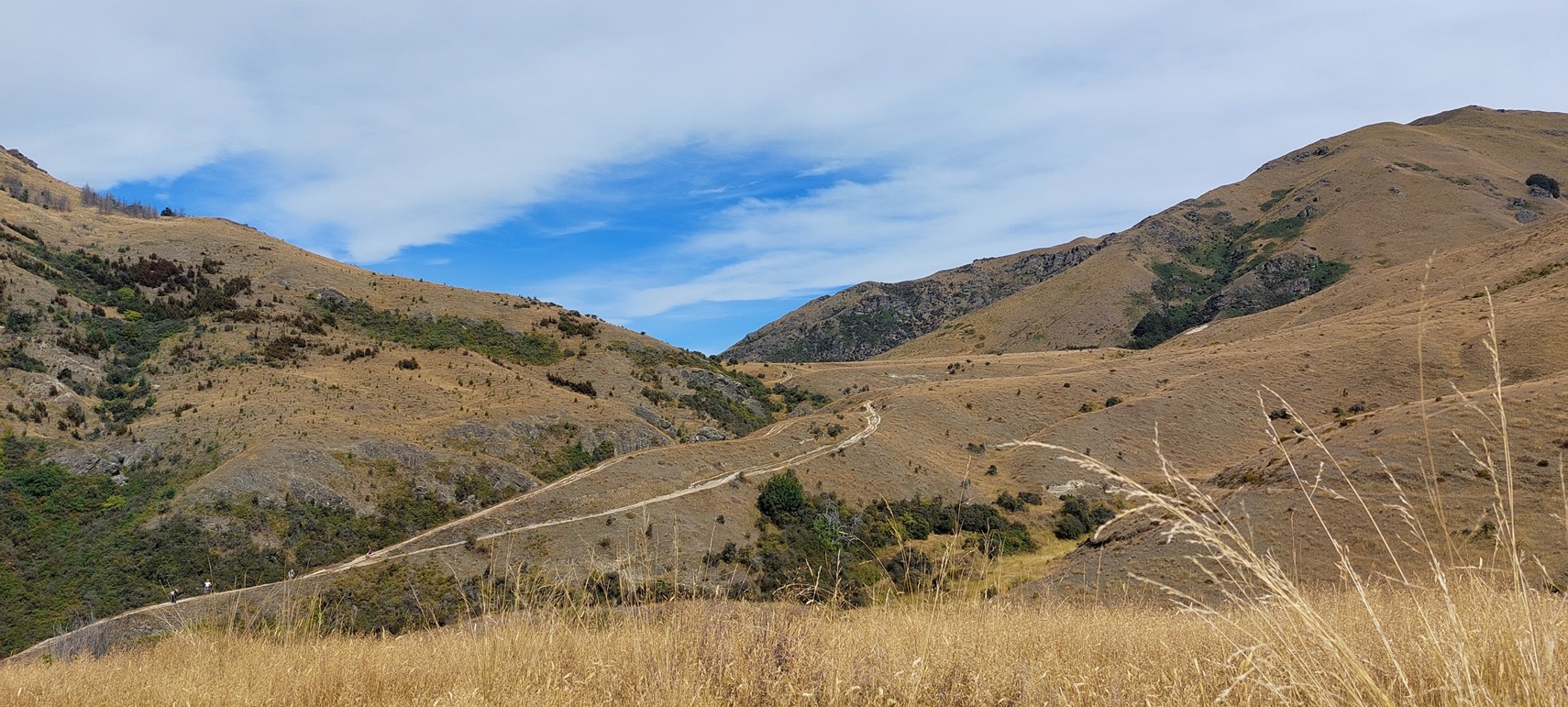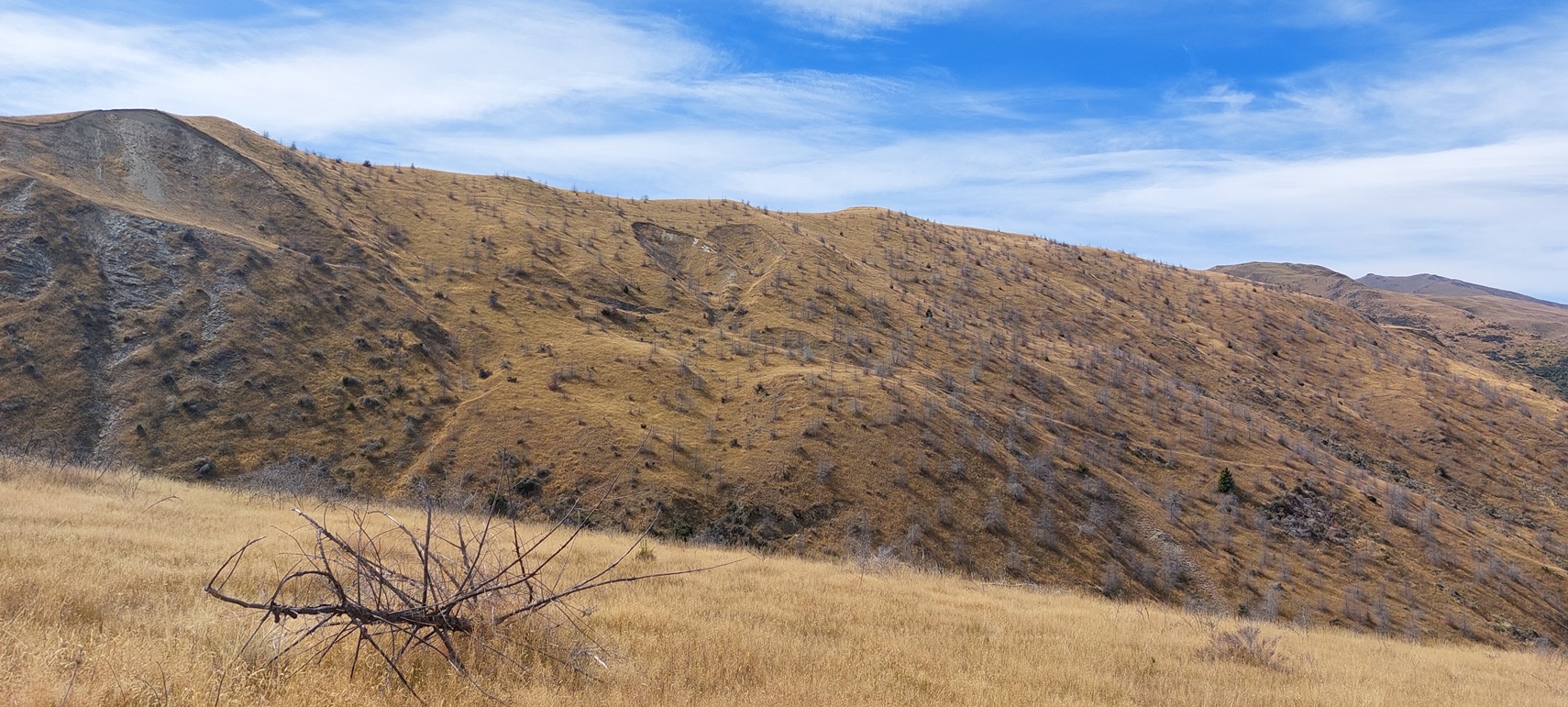
At the risk of sounding down-home, Sawpit Gully Trail starts behind the Arrowtown shops. Glamorously, though, Arrowtown actually backs on to a huge chunk of publicly accessible, protected land, thanks to Mutt Lange and his amazing actions conserving the farmland he bought.

Going anticlockwise, the first half-hour or so is wall to wall introduced plants. Conifers and sycamores are another legacy of gold mining days. Deciduous trees create a shady coolness in summer, a golden cathedral in autumn or a winter treat when absent leaves let the sun shine through.

Arrowtown is already high altitude so quite quickly the track heads towards the tops. Unlike us, a creek’s got more sense and is easing its way downhill. This does mean creek bed for walkers to navigate, but also the delightful sound of moving water.

We’re all human. We’re all fundamentally fragile. Emotional security calls. The supposed cocoon of coupledom.
Since the mid 1800s and the development of romanticism we’ve placed our hopes for happiness largely at the feet of life partnerships. This is a big ask; marriage was historically a more emotionally moderate arrangement.

Thankfully though, although we may be wired for connection there’s more to life than just one primary attachment. Commitments based on hormones and hope don’t always last. Spirituality does, along with whānau, both biological and chosen. So does community and loving friendship. Hilltop expansiveness lasts longer than any of it.
Alas though, here the past planting of conifers has had long lasting effects that bite us with seriously sharpened teeth in both buttocks. Conifers were introduced for good reason but they took off and took over.

The creek peters out, disappearing into a cleft at the top of a hill. Plane noises hint at what’s over the brow, a surprise view of Lake Hayes guiding the eye in the direction of Queenstown International Airport.
A tussocky flat allows for a high-country kip. Then there’s a steep shingly descent back to civilisation.












